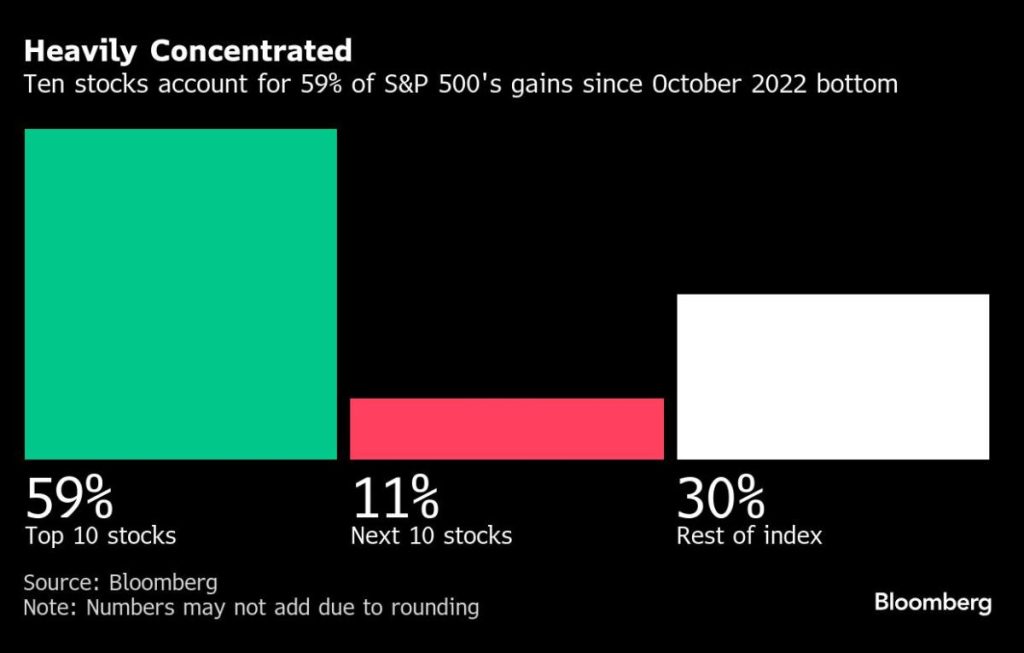
(Bloomberg) — By this time last year, the stock market’s rally had blown past even the most optimistic targets and Wall Street forecasters were convinced it couldn’t keep up the dizzying pace.
Most Read from Bloomberg
So as strategists at Bank of America Corp., Deutsche Bank AG, Goldman Sachs Group Inc. and other big firms sent out their calls for 2024, a consensus took shape: After surging more than 20% as artificial intelligence breakthroughs unleashed a tech-stock boom and the economy kept defying the doomsayers, the S&P 500 Index would likely scratch out only a modest gain. As the Federal Reserve shifted to cutting interest rates, Treasuries were seen as ripe to give equities a run for their money.
What followed, instead, delivered another humbling to Wall Street prognosticators who have been caught off guard by the market’s twists and turns ever since the end of the pandemic.
Rather than lose steam, equity prices continued to soar higher. By late January, the S&P 500 had already surpassed the average year-end target from strategists. It went on to hit one record high after another and is heading to a 25% gain in 2024, capping the strongest back-to-back annual runs since the dot-com bubble of the late 1990s.
“There is an element of miraculousness to it,” said Julian Emanuel, chief equity and quantitative strategist at Evercore ISI, who by mid-year abandoned his call for a slight dip in the S&P 500 and was the first among major strategists to introduce a year-end target of 6,000. “Trends can go on longer and go farther than one could ever imagine.”
The continuation of that trend is a testament to how much the post-pandemic economy has confounded forecasters by steadily expanding even after the Fed pushed interest rates to a more than two-decade high.
As 2023 was drawing to a close — and bonds were rallying strongly on speculation that the central bank would need to start easing policy aggressively — fixed-income strategists were predicting that the benchmark 10-year Treasury yield would drift lower to end this year around 3.8%. It has risen to eclipse 4.6% instead.
The economy’s strength has supported the stock market’s rise by trickling down to corporate profits. At the same time, excitement about AI continued to push up the stocks of big tech companies like Alphabet Inc., Amazon.com Inc., Apple Inc., Meta Platforms Inc. and Nvidia Corp. The rally got another boost from Donald Trump’s presidential victory by promising tax cuts and corporate-friendly policies.


